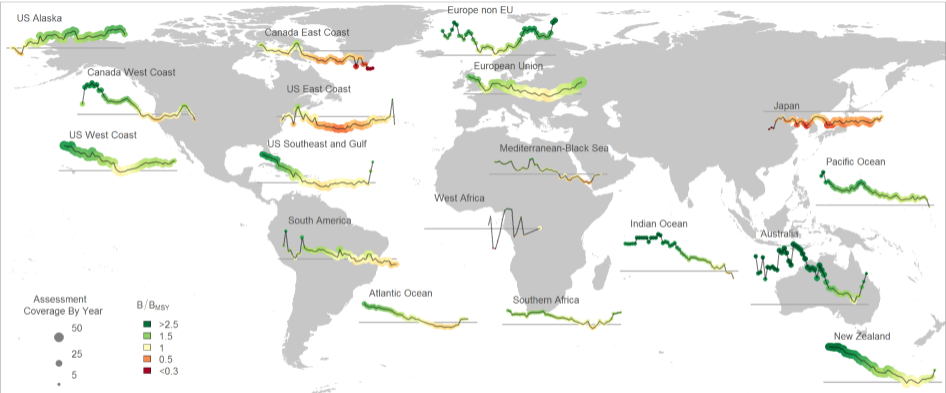/Biological oceanography/Biota abundance, biomass and diversity
Type of resources
Topics
Keywords
Contact for the resource
Provided by
Years
Formats
Representation types
-

The RAM Legacy Stock Assessment Database is a compilation of stock assessment results for commercially exploited marine populations from around the world. The RAM Legacy Stock Assessment Database is grateful to the many stock assessment scientists whose work this database is based upon and the many collaborators who recorded the assessment model results for inclusion in the RAM Legacy Stock Assessment Database. Since 2011 the RAM Legacy Data base has been hosted and managed at the University of Washington with financial assistance from a consortium of Seattle-based seafood companies and organizations, and from the Walton Family Foundation. Initial development of the database from 2006-2010 was supported by the Census of Marine Life, Canadian Foundation for Innovation, NCEAS, NSERC, the Smith Conservation Research Fellowship, New Jersey Sea Grant, and the National Science Foundation.
-

The Plankton Lifeform Extraction Tool brings together disparate European plankton datasets into a central database from which it extracts abundance time series of plankton functional groups, called “lifeforms”, according to shared biological traits. This tool has been designed to make complex plankton datasets accessible and meaningful for policy, public interest, and scientific discovery. The Plankton Lifeform Extraction Tool currently integrates 155 000 samples, containing over 44 million plankton records, from nine different plankton datasets within UK and European seas, collected between 1924 and 2017. Additional datasets can be added, and time series can be updated.
-

The Continuous Plankton Recorder (CPR) is a marine sampler that is towed behind volunteer ships of opportunity at speeds of up to ∼20 knots and samples at a depth of ∼7 m below the surface. Plankton have been sampled on routes crossing the North Atlantic and NW European shelf seas using a consistent methodology since 1958. Plankton species abundance counts are included here from 1960-2019. The CPR unit is a metal casing in the shape of a ∼1 m torpedo that houses a roll of silk which automatically rotates using a geared propeller system. The seawater enters the front aperture where plankton and small particles are captured onto the rotating silk, which has a mesh size of 270 µm. This silk is stored in 4 % buffered formalin to preserve the sample until microscopic analysis at the laboratory in Plymouth. The silk is cut into pre-defined sections that represent one sample and equate to 10 nautical miles of tow. Phytoplankton and zooplankton are identified and counted at different stages of the microscopic analysis: semi-quantitative count of phytoplankton across 20 fields of view per sample, quantitative count of all zooplankton >= 2 mm (these are picked off the silk for identification), and semi-quantitative traverse count of all zooplankton 2 mm. For a more in-depth description of the sampling methodology please refer to Richardson et al. (2006). Ostle, C., et al. The Plankton Lifeform Extraction Tool: A digital tool to increase the discoverability and usability of plankton time-series data, Earth Syst. Sci. Data Discuss. https://doi.org/10.5194/essd-2021-171, 2021. The Phytoplankton Colour Index is a record of the colour gradient of the mesh as one of 4 colour categories (0,1,2,6.5) and has been shown to relate to the chlorophyll content of the water, including organisms not visible in the sample (Raitsos et al., 2013, Raitsos, D.E., Walne, A., Lavender, S.J., Licandro, P., Reid, P.C., and Edwards, M. 2013. A 60-year ocean colour data set from the Continuous Plankton Recorder. Journal of Plankton Research, 35(1): 158–164).
 Catalogue PIGMA
Catalogue PIGMA